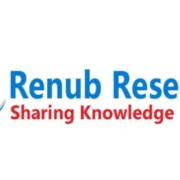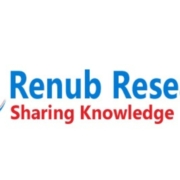Clinical Chemistry Analyzer Market to Reach $21.61B by 2033
Clinical Chemistry Analyzer Market Trends & Summary
The Clinical Chemistry Analyzer Market is projected to reach US$ 21.61 billion by 2033, rising from US$ 14.74 billion in 2024, at a compound annual growth rate (CAGR) of 4.35% during the forecast period from 2025 to 2033. The market growth is largely driven by the rising prevalence of chronic illnesses, such as diabetes, cardiovascular diseases, and renal disorders, which necessitate frequent monitoring of key biochemical markers. Manufacturers are increasingly producing advanced clinical chemistry solutions to meet the growing demand for rapid and accurate diagnostic testing.
The market is segmented by product type (analyzers, reagents, others), test type (basic metabolic panel, liver panel, renal profile, lipid profile, thyroid function panel, electrolyte panel, specialty chemical tests), and end-user (hospitals, diagnostic laboratories, research laboratories, and others). Additionally, the market spans across 24 countries, with detailed company analysis of major players like Thermo Fisher Scientific, Abbott Laboratories, Siemens Healthineers, Danaher Corporation, Johnson & Johnson, Sysmex ADR, HORIBA, Ltd., and Hitachi Hologic, Inc.
Full Access Report:https://www.renub.com/clinical-chemistry-analyzer-market-p.php
Global Clinical Chemistry Analyzer Industry Overview
Clinical chemistry analyzers are automated devices that measure the chemical composition of biological fluids, including blood, serum, urine, and cerebrospinal fluid. These analyzers detect levels of glucose, electrolytes, enzymes, hormones, and proteins using techniques such as spectrophotometry, immunoassays, and electrochemistry. They play a critical role in diagnosing, monitoring, and managing diseases like diabetes, liver disorders, renal disease, and metabolic abnormalities.
The increasing prevalence of chronic diseases is driving demand for clinical chemistry analyzers. According to the World Health Organization (WHO), chronic diseases account for 71% of global deaths, and the International Diabetes Federation predicts that by 2045, there will be 783 million adults with diabetes, up from 537 million in 2021. This escalating disease burden emphasizes the need for continuous monitoring of biochemical markers, fueling the adoption of these analyzers worldwide.
Another key driver is the aging population. The United Nations Department of Economic and Social Affairs projects that by 2050, 1.5 billion people will be over 65, more than double the 703 million recorded in 2019. Older individuals typically require more frequent testing and monitoring for age-related and chronic diseases, further increasing demand for clinical chemistry analyzers.
Moreover, technological advancements in automation, artificial intelligence, and high-throughput systems are enhancing the accuracy, efficiency, and usability of analyzers. The American Association for Clinical Chemistry (AACC) reports a 30% increase in the adoption of automated analyzers in hospital laboratories over the past five years. These innovations allow for simultaneous testing, faster turnaround times, and minimized human error, making them highly appealing to healthcare facilities.
Growth Drivers for the Clinical Chemistry Analyzer Market
Rising Aging Population
The growing aging population is a significant market driver. As individuals age, the prevalence of chronic diseases such as diabetes, heart disease, and renal disorders increases, necessitating more frequent diagnostic testing. Clinical chemistry analyzers provide precise, reliable, and timely data on multiple biomarkers, aiding physicians in treatment planning and management. Additionally, aging populations are prompting healthcare systems to emphasize preventive care and early disease detection, further boosting demand for analyzers.
Rising Prevalence of Chronic Diseases
Chronic illnesses are increasingly driving the need for clinical chemistry analyzers. Conditions like diabetes, hypertension, and cardiovascular disorders require continuous monitoring for disease progression and treatment effectiveness. Clinical chemistry analyzers provide essential insights into disease biomarkers, supporting well-informed clinical decisions. Lifestyle changes and longer life expectancies globally are exacerbating the chronic disease burden, making fast and accurate diagnostics essential for improving patient outcomes and healthcare management.
Improved Healthcare Infrastructure
Improving healthcare infrastructure, particularly in emerging economies, is fueling market growth. The expansion of hospitals, diagnostic centers, and research facilities increases the need for modern, efficient diagnostic tools. Clinical chemistry analyzers are crucial for rapid and accurate detection of metabolic, infectious, and chronic conditions, making them indispensable as healthcare systems modernize. Rising awareness among patients and growing middle-class populations further strengthen demand in these regions.
Challenges in the Clinical Chemistry Analyzer Market
High Cost of Equipment
A major market challenge is the high cost of analyzers, which limits adoption, especially among small medical facilities and diagnostic centers in developing countries. High initial investment and maintenance costs can prevent smaller institutions from acquiring advanced technology, affecting the quality of patient care. This barrier also constrains access to cutting-edge diagnostic solutions in regions with developing healthcare systems.
Competition from Emerging Technologies
Point-of-care (POC) testing devices present significant competition to traditional clinical chemistry analyzers. POC devices offer quick results, portability, and user-friendly operation, making them attractive in emergency settings, outpatient clinics, and remote areas. Although traditional analyzers provide more comprehensive and precise results, the convenience and speed of POC devices are challenging market growth for conventional analyzers, especially where cost-effectiveness and rapid testing are prioritized.
👉 Want to explore detailed market trends, segment insights, and forecasts? 🔗 Request Sample Report:https://www.renub.com/request-sample-page.php?gturl=clinical-chemistry-analyzer-market-p.php
Regional Market Insights
United States
The U.S. market is one of the largest globally, supported by a strong healthcare system and high demand for accurate diagnostics. Factors like an aging population, rising chronic disease prevalence, and advancements in automation and AI are driving growth. Despite challenges such as high costs, regulatory constraints, and competition from POC devices, the market continues to expand, aided by the shift to outpatient care and diagnostic services.
United Kingdom
The UK market is growing steadily due to technological advancements in diagnostics and increasing patient demand for accurate testing. Chronic disease prevalence and the focus on preventive healthcare are fueling analyzer usage. Automation improves efficiency and cost-effectiveness, although challenges such as expensive equipment, regulatory compliance, and POC competition persist. Market growth is expected to continue gradually.
India
India’s market is expanding rapidly due to the increasing burden of chronic diseases and growing healthcare infrastructure. Technological developments, including automation and AI, enhance the precision and accessibility of clinical chemistry analyzers. While high costs and regulatory challenges exist, rising awareness of early detection and preventive care supports continued market growth, including in rural areas.
Saudi Arabia
Saudi Arabia’s market is driven by increasing healthcare spending, chronic disease prevalence, and technological improvements. Government initiatives, such as Vision 2030, emphasize advanced diagnostic equipment and preventive healthcare, boosting analyzer adoption. Despite high upfront costs and the need for trained personnel, the market is expanding steadily due to emphasis on quality healthcare and early disease detection.
Market Segmentation
By Product Type
- Analyzers – Core diagnostic equipment for biochemical testing.
- Reagents – Chemicals and solutions used in tests.
- Others – Accessories and consumables associated with analyzers.
By Test Type
- Basic Metabolic Panel
- Liver Panel
- Renal Profile
- Lipid Profile
- Thyroid Function Panel
- Electrolyte Panel
- Specialty Chemical Tests
By End User
- Hospitals
- Diagnostic Laboratories
- Research Laboratories & Institutes
- Others
By Country
The market spans 24 countries, including the U.S., Canada, Germany, UK, France, Italy, Netherlands, Spain, China, Japan, India, South Korea, Indonesia, Malaysia, Argentina, Brazil, Mexico, Colombia, Saudi Arabia, South Africa, Israel, Australia, UAE, and the Rest of the World (ROW).
Key Companies in the Clinical Chemistry Analyzer Market
The report provides detailed profiles of major industry players, including company overview, key personnel, recent developments, and financial insights. Some of the key companies include:
- Thermo Fisher Scientific
- Abbott Laboratories
- Siemens Healthineers
- Danaher Corporation
- Johnson & Johnson
- Sysmex ADR
- HORIBA, Ltd.
- Hitachi Hologic, Inc.
These players are driving market growth through technological innovation, product launches, and strategic partnerships, strengthening their presence globally.
Conclusion
The Clinical Chemistry Analyzer Market is set for robust growth through 2033, fueled by factors such as the rising prevalence of chronic diseases, an aging population, and advancements in healthcare infrastructure. While challenges like high costs and competition from POC technologies exist, ongoing innovations in automation and AI, coupled with increasing demand in emerging markets, are expected to sustain market expansion. The industry remains highly competitive, with major players investing in research, product development, and regional expansion to capitalize on global demand.
Note: If you need details, data, or insights not covered in this report, we are glad to assist. Through our customization service, we will collect and deliver the information you require, tailored to your specific needs. Share your requirements with us, and we will update the report to align with your expectations.


